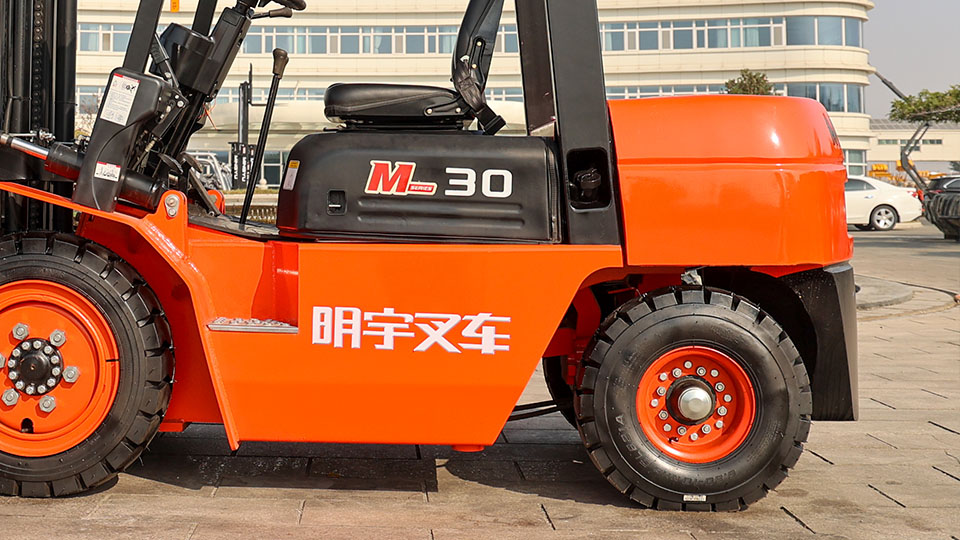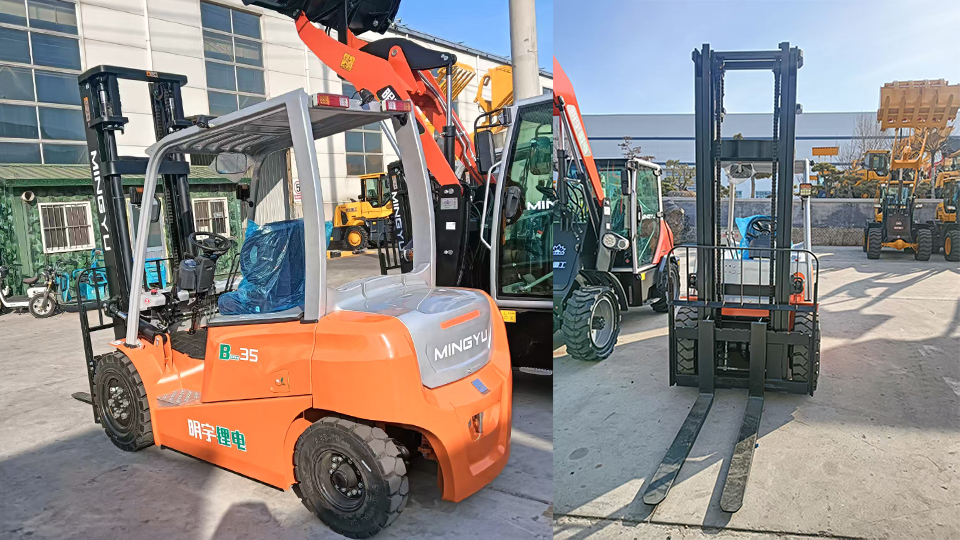
The Prerequisite Technical and Legal Requirements to Drive a Forklift
Driving a forklift, or Powered Industrial Truck (PIT), is not a simple matter of obtaining a standard driver's license. It is a highly specialized skill governed by strict federal safety regulations designed to mitigate the significant risks associated with operating heavy machinery in dynamic environments like warehouses, factories, and construction sites. The primary regulatory authority in the United States is the Occupational Safety and Health Administration (OSHA), specifically under the standard 29 CFR 1910.178.1 This regulation mandates that only trained, evaluated, and certified operators are permitted to drive a forklift.
To legally and safely drive a forklift, an individual requires a specific combination of legal certification, technical knowledge, physical capability, and operational proficiency.2 This article will systematically detail each of these prerequisite requirements.
�� I. The Legal Requirement: OSHA Certification
The single most critical requirement to drive a forklift in the U.S. is not a state-issued license, but a site-specific, employer-issued certification proving the operator's competence.
A. The Three-Part Training Mandate
OSHA mandates that the operator training program must consist of three distinct, mandatory phases:3
1. Formal Instruction (Theoretical Knowledge)
This phase involves learning the foundational knowledge of forklift operation through lectures, videos, written materials, and online modules. The curriculum must cover:
Vehicle Characteristics: Understanding the specific type of PIT being operated, including its controls, instruments, stability features, load capacity, and unique attachments.4 This includes a deep dive into the Stability Triangle , the core principle governing safe load handling and tip prevention.
Operating Instructions: Procedures for starting, stopping, steering, visibility, turning, handling loads (lifting, tilting, stacking), and refueling/recharging batteries.5
Workplace Hazards: Identifying and mitigating hazards unique to the operating environment, such as slippery surfaces, ramps, blind spots, floor conditions, pedestrian traffic, and restricted overhead clearances.
OSHA Regulations: A thorough review of the 29 CFR 1910.178 standards and the operator's responsibilities under the law.
2. Practical Training (Demonstration and Practice)

This is the hands-on phase where a qualified person demonstrates safe operation, and the trainee practices the necessary maneuvers under direct supervision.6 This practice must cover:
Pre-Operation Checks: Correctly performing and documenting a daily pre-shift inspection (mandated before every shift) to check tires, lights, fluid levels, horn, brakes, steering, and mast operations.7
Maneuvering: Smoothly executing forward and reverse travel, turning corners safely, navigating narrow aisles, and managing travel speeds appropriate for the environment.8
Load Handling: Safely approaching loads, engaging the forks correctly, assessing load stability, transporting the load without excessive sway, and placing the load accurately onto racks or stacks.
3. Evaluation and Certification
The final step is the performance evaluation, which serves as the actual certification.9 A "qualified person" (defined by OSHA as one who possesses the necessary knowledge, training, and experience to train and evaluate) must observe the trainee operating the forklift in the workplace and determine if they are competent to operate the machine safely.
Site-Specific Certification: The resulting certification is site- and equipment-specific.10 This means if an operator moves to a new company or switches from a standard sit-down counterbalance forklift to a reach truck, a new evaluation and potentially new training are required.
Documentation: The employer must formally certify the operator by documenting the name of the trainee, the date of training and evaluation, and the name(s) of the person(s) who conducted the training and evaluation.11 These records must be retained.
B. Certification Maintenance and Refresher Training
Forklift certification is not permanent. OSHA requires that operators be re-evaluated at least every three years to ensure continued competence.12
Additionally, refresher training and a new evaluation are mandatory immediately if:
The operator is involved in an accident or near-miss incident.13
The operator is observed operating the PIT in an unsafe manner.14
The operator is assigned to operate a different type of PIT.
There are changes in the workplace conditions that could affect safe operation.15
⚙️ II. The Technical Requirement: Knowledge of Equipment and Dynamics
Beyond the legal certificate, driving a forklift requires an in-depth technical understanding of its unique engineering and physics. Unlike a car, a forklift's stability is based on a concept known as the Stability Triangle.16
A. Stability and Load Dynamics
A standard counterbalanced forklift is inherently unstable, designed to rely on a precise balance of counterweight, load, and the position of the truck's three points of contact (the front axle and the pivot point of the steer axle).
1. The Stability Triangle and Center of Gravity ($CG$)

The Stability Triangle is an imaginary area on the ground defined by the three points of contact.17 The truck's Center of Gravity (18$CG$) must remain within this triangle for the forklift to remain stable.19
When a load is lifted, the combined load center of gravity ($LCG$) shifts upward and forward. The higher and heavier the load, the smaller the margin for error.
Lateral Stability: Forklifts are highly susceptible to lateral (sideways) tips when turning, especially with raised loads, because the centrifugal force shifts the 20$CG$ outside the Stability Triangle.21
The operator must technically understand the impact of load weight, load center, mast tilt, and travel speed on the machine's stability, which often involves consulting the data plate—the official document detailing the forklift's capacity and load center at a specific height.22
B. Understanding and Interpreting the Data Plate
Every forklift is equipped with a data plate , which is a legal and technical document essential for safe operation. The operator must know how to read and apply its specifications. Key data points include:
Rated Capacity (C): The maximum weight the truck can safely lift.23
Load Center (LC): The distance from the vertical face of the forks to the load's center of gravity (usually 24 inches for standard trucks).24
Maximum Lift Height (H): The highest point the forks can reach.
Tire Type: Identifies the type of tire (cushion or pneumatic), affecting stability and terrain use.
Operators who attempt to lift a load greater than the $C$ or whose $LC$ is beyond the rated $LC$ are in violation of safety rules and risk a catastrophic tip-over. The relationship can be described by the moment equation:
$$\text{Required Moment} = L \times D$$
Where $L$ is the load weight and $D$ is the distance to the load center. This must always be less than the stability moment provided by the counterweight.
��️ III. The Physical and Mental Requirements
Forklift operation demands a specific set of physical and cognitive attributes to ensure consistent safety in dynamic and often hazardous work environments.25
A. Physical Fitness and Capability
While a medical examination is not universally mandated, the operator must be physically capable of performing the job functions. Key physical requirements include:
Vision: Adequate visual acuity (with or without corrective lenses) is essential for depth perception, judging distances, reading gauges, and recognizing potential hazards.26 Peripheral vision must be sufficient to monitor traffic and pedestrians.
Hearing: The ability to hear verbal instructions, warning horns, backup alarms, and the sounds of approaching traffic is critical.27
Coordination and Reaction Time: Good hand-foot-eye coordination is necessary for simultaneous operation of steering, lifting controls, and braking.28 Reaction time must be sharp to respond quickly to unexpected events.
Mobility: The operator must be able to comfortably and repeatedly mount and dismount the truck, operate controls, and perform the required pre-shift checks.29
B. Mental Acuity and Cognitive Skills
Driving a forklift is a cognitive task requiring constant hazard assessment and decision-making:30
Concentration: The operator must maintain high levels of focus for extended periods, especially in repetitive or high-traffic environments.31 Distraction is a leading cause of forklift accidents.32
Risk Assessment: The ability to immediately identify potential dangers (e.g., uneven loads, damaged racks, wet floors, excessive speed) and adjust operation accordingly.
Spatial Reasoning: Excellent spatial awareness is required to navigate tight aisles, judge clearances, and accurately position forks and loads, often relying on mirrors and subtle body shifts.33
Understanding of Instructions: The ability to comprehend and consistently follow complex written and verbal instructions, safety protocols, and warning signs.
�� IV. Operational and Site-Specific Proficiency
The final set of requirements involves the successful application of knowledge in a live work setting, which defines true proficiency.34
A. Pre-Operation and Maintenance Knowledge
A qualified driver must treat the daily pre-shift inspection as a mandatory, critical operational step, not a formality.35 They must be able to:
Identify Defects: Accurately check fluid levels, tire pressure, brake function, horn, lights, and mast operation.36 Any defect that impacts the safe operation of the truck (e.g., an inoperable horn, faulty brakes) must be reported, and the truck must be immediately tagged "Out of Service" until repaired.37
Fuel/Battery Management: Safely handle battery charging (including proper ventilation, use of PPE, and management of electrolyte levels) or propane cylinder replacement (leak checks, correct connection), adhering to strict safety protocols for handling hazardous materials.38
B. Safety Procedures and Best Practices
The core of safe forklift operation revolves around a rigid adherence to best practices:
Load Management: Never exceeding the load capacity, ensuring the load is centered and secured, and carrying the load as low as possible (typically 2-4 inches off the floor) with the mast tilted back fully for maximum stability during transit.39
Travel Rules: Always driving at a speed that allows the truck to be stopped safely, especially when approaching corners, where the horn must be sounded.40 Maintaining a safe following distance (at least three truck lengths).
Ramps and Grades: When traveling up or down a ramp, the load must always be kept on the uphill side of the truck to prevent the load from shifting or the rear wheels from lifting off the ground, causing a loss of steering control.41
Pedestrian Awareness: Yielding the right-of-way to pedestrians at all times.42 Maintaining a safe distance from dock edges and railcars.
Parking and Shut-Down: When leaving the truck, the operator must fully lower the forks, neutralize the controls, set the parking brake, and shut off the power.43 If the truck is parked on an incline, the wheels must be blocked.
✅ Conclusion: Driving a Forklift is a Regulated Profession
To successfully and lawfully drive a forklift, an individual must fulfill a comprehensive set of non-negotiable requirements. It demands more than simply operating a machine; it requires continuous compliance with federal law, a deep technical grasp of load dynamics, physical fitness, and a rigorous commitment to operational safety protocols.44
The prerequisite to driving a forklift is the employer-issued, site-specific OSHA certification, which validates that the operator has successfully completed the mandated formal training, practical instruction, and a hands-on performance evaluation, ensuring they are competent to manage the machinery and mitigate the inherent risks in their specific work environment.45 Any individual without this current, valid certification is operating outside the law and constitutes an immediate safety hazard.
Name: selena
Mobile:+86-13176910558
Tel:+86-0535-2090977
Whatsapp:8613181602336
Email:vip@mingyuforklift.com
Add:Xiaqiu Town, Laizhou, Yantai City, Shandong Province, China